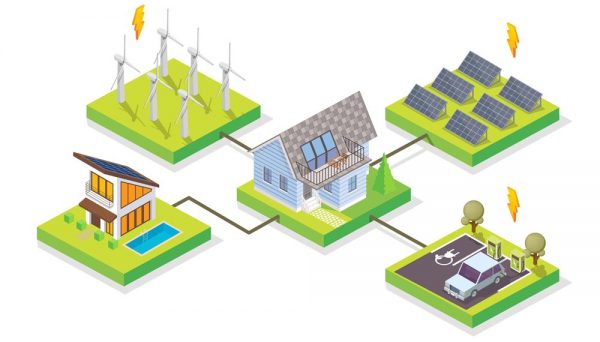With the rapid adoption of residential photovoltaics, many households are seeing an opportunity to become prosumers and lower their bill. To support customers seeking a more active role in the energy market, utilities should take a good look at energy sharing platforms.
Energy-sharing platforms are systems that enable energy transactions such as the purchase and sale of energy between prosumers and consumers. These platforms have the potential to support solar communities that give participants the opportunity to generate, trade, and use solar energy in a more efficient and economical way than the current model offered by utilities.
These platforms can provide significant benefits to both consumers and prosumers. Firstly, prosumers can earn extra revenue from excess energy production and, secondly, everyday consumers have more options for purchasing energy, potentially resulting in lower prices and a greater ability to support green energy in their local community.
“Blockchain’s potential is in its ability to disrupt the existing business environment and enable democratization of the business processes that are traditionally managed by a central authority.(1)”

Blockchain technology supports energy-sharing platforms which allow the sale of energy without an intermediary, for example, allowing a prosumer to sell excess energy directly to their neighbor. In such a system, the blockchain ledger makes it possible for participants to keep track of energy transactions happening on the platform and in doing so, stay informed about available energy and the price it is being traded at.
“1,023 megawatts of community solar has been installed in the U.S. through Q1 2018(2)”
Currently, there are numerous energy sharing platforms operating and supporting the creation of community solar projects around the globe, with Brooklyn Microgrid being the most notable example.
Brooklyn Microgrid
In 2015, the Brooklyn Microgrid project started enabling transactions for buying and selling energy generated from photovoltaic panels. The first transaction happened in 2016 with three participants who are part of this community, traded energy using USD through a transactive microgrid platform. Currently, the project has 50 participants and the minimum selling price for energy is 7 cents per kilowatt-hour(3).
“This project…, is the first version of a new kind of energy market, operated by consumers, which will change the way we generate and consume electricity(4)”
Power ledgers in Australia
In Busselton, Australia, a trial was conducted with 10 participants in 2017 to enable the sale of energy through Power Ledger´s platform. In this project, people who have solar panels can sell their excess energy to neighbors at a lower rate than they would usually get from the utility, while recipients make savings when they purchase energy in this way. Power Ledger’s system achieves these financial benefits by cutting out the extra costs involved in commercializing energy. It is estimated that this system could allow households to save US$430 a year on their energy bills(5).
“Residents will be able to save on their power bills using a combination of rooftop solar PV panels, battery storage and Power Ledger’s blockchain technology(6).”
Energy sharing platforms encourage the creation of new business models for energy commercialization which allow prosumers to participate more actively in the energy market. Utilities should look at these new models as opportunities to innovate their business processes while remaining competitive in the ever-changing energy industry.
One way that utilities can get involved in this new model is by offering shared energy platforms, which could help them find new revenue streams and manage the integration of prosumers into energy markets.
To find out how Blockchain platforms have emerged as an alternative which could manage RECs in a way which is smarter, faster, more accurate, and less resource-intensive than the current model, read the next article.
(1) https://www.juniper.net/assets/us/en/local/pdf/whitepapers/2000721-en.pdf
(2) https://www.seia.org/initiatives/community-solar
(3) https://motherboard.vice.com/en_us/article/d7y7n7/transactive-grid-ethereum-brooklyn-microgrid
(4) https://www.brooklyn.energy/
(5) https://microgridknowledge.com/blockchain-energy-trading-australia/
(6) https://medium.com/power-ledger/power-ledger-yolk-evermore-white-gum-valley-blockchain-energy-4ecd72c0a9c4








